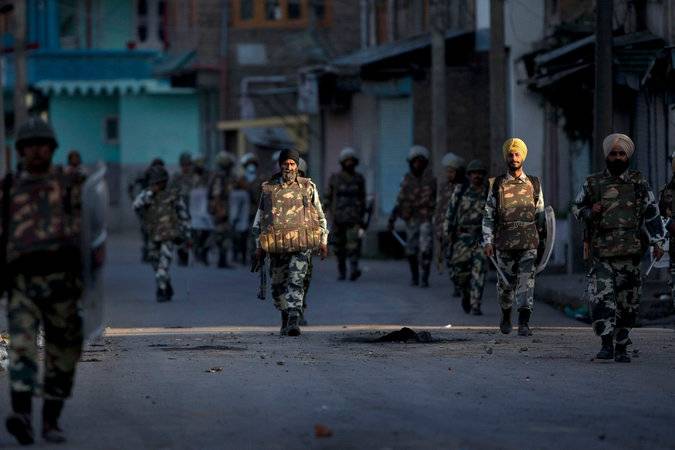WASHINGTON: Instead of opening political negotiations, India continues to “unabashedly” use military force in the Occupied Kashmir to maintain a status quo that for years has suffocated millions in the region, according to an op-ed published in influential New York Times on Monday.
The op-ed “Kashmir, and the inheritance of loss” narrates horrific stories of Indian brutalities committed during widespread protests triggered by the killing of young Kashmiri freedom fighter, 22-year-old Burhan Wani on July 8.
News of Wani’s killing spread “as fast as the bullets that had hit him”, which was followed by wave of protests that is still ongoing and has claimed more than 50 lives including women and children.
Wani became an internet sensation over the past year after he gathered a small band of mostly teenage Kashmiri freedom fighters and used social media to challenge the Indian government.
“A dozen boys with a few guns, they were no threat to the Indian army, one of the largest in the world,” the Op-ed stated, adding that there was no record of Burhan and his small group carrying out any attack. It was “symbolic” against occupation of Kashmir where about half a million of Indian soldiers are stationed.
The article said that Burhan groomed in an era which has seen ongoing protests against Indian troops in Kashmir which has killed more than 70,000 people.
One afternoon, Indian police officers posted in Burhan’s town reported sent him and his brother Khalid to fetch cigarettes and then beat up the boys when they returned. Humiliated, Burhan left for the mountains and joined a tiny group of militants. Then last year, Khalid, who was doing post-graduate work in economics, was killed by Indian soldiers.
More than 200,000 are reported to have attended his funeral throughout the day as prayers were repeated several times to accommodate people who continue to pour in for his funeral.
In hundreds of locations, people came out to mourn his dead and raise their voice against the Indian occupation. Vast majority were unarmed.
“The troops responded with a brutality rare even by the grim standards of their record in Kashmir. They fired bullets, tear gas and lead pellets. Soon, the Indian government imposed a military curfew.”
The author visited hospitals where victims of violence had been brought in. He said in one ward there were about 20 beds with a teenager or young man in each and almost every patient had large, black sunglasses.
“Seventy-two patients with pellet injuries arrived here in one day,” one doctor told the author. One hospital, SMHS Hospital, alone had received more than 180 people with serious wounds to the eyes.
“A single shot from a pellet gun sprays more than a hundred pellets. A pellet is a high-velocity projectile 2mm to 4mm around and with sharp edges. It doesn’t simply penetrate an eye; it ricochets inside it, tearing the retina and the optic nerves, scooping out flesh and bone.”
Indian authorities had once again begun their familiar silencing routine and have fallen back on same old rituals of denial. “But already one line of graffiti had appeared on every other wall throughout the entire valley: “Go India, Go Back!”






